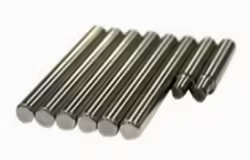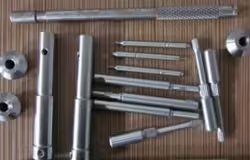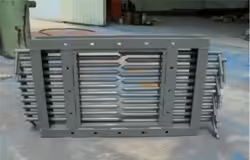
Crucial Breakthrough: 3 Secrets to Reducing Steel Billet Oxidation Loss
Table of Contents
Introduction
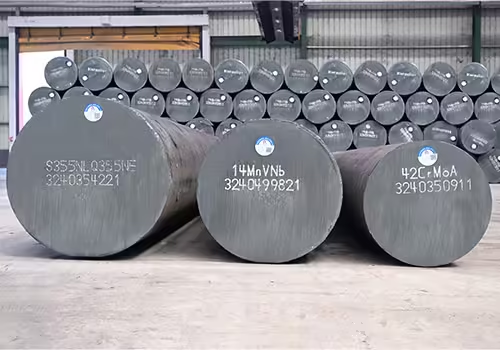
In the competitive world of steel production, maintaining the integrity and yield of raw material is paramount to economic success and product quality. Steel billets, which are foundational products used globally, including those manufactured by companies like Henan Jiyuan Iron & Steel (Group) Co,.Ltd, are subject to rigorous processing before they become finished goods like round bars or square bars. One of the most significant challenges during the hot rolling process is the phenomenon of oxidation, which results in the formation of undesirable iron scale.
Effective Steel Billet maintenance is not simply about handling and storage; it primarily involves controlling the high-temperature environment within the heating furnace. When steel billets are heated in the furnace, iron scale forms, which not only damages the steel’s structure but also necessitates additional removal steps, ultimately reducing the metal yield. Domestically, the oxidation loss (scaling rate) for steel billets in hot-rolling furnaces typically ranges between 1% and 1.5%, sometimes even reaching 3%. In contrast, leading international rolling mill furnaces often manage to control this oxidation loss to around 0.5%. This substantial difference highlights the massive potential for efficiency gains through advanced Steel Billet maintenance practices focused on oxidation reduction.
Experts and researchers globally have focused heavily on studying the factors influencing steel billet oxidation, including the heating schedule, the specific type of steel being processed, and critically, the furnace atmosphere. Given the complexity and instability of the atmosphere inside the furnace, which interacts dynamically with the steel composition and the heating schedule, a consolidated understanding of oxidation behavior is essential for guiding production practices. The following three secrets—or crucial breakthroughs—detail the mechanisms and strategies required to drastically reduce oxidation loss and achieve superior Steel Billet maintenance.
The Cost of Scale: Understanding Steel Billet Oxidation Loss
Oxidation loss, or “burning loss,” occurs when the surface iron reacts with oxidizing components in the furnace atmosphere, leading to the formation of iron oxides (FeO, Fe3O4, and Fe2O3). This scale formation is an irreversible process when exposed to oxygen. The consequences are manifold: diminished overall metal yield, increased operational costs associated with scale removal, and potential compromise of the final product’s surface quality. The ability to effectively control this process separates high-efficiency operations from those struggling with material waste.
Why is Scale a Problem for Steel Billet Quality?
The primary issue is the loss of mass; if 1% of the steel is oxidized, that metal is essentially wasted. Furthermore, the presence of scale requires a subsequent descaling process, adding complexity and time to the production cycle. If the scale is poorly adhered or, conversely, too sticky (as can happen with sulfur compounds), it negatively impacts the descaling rate and the eventual quality of the finished product. For manufacturers offering specialized services such as tech support, processing service, and inspection services, minimizing oxidation is a key component of delivering high-quality finished products.
Secret 1: Precision Atmosphere Control – Managing Oxygen and Carbon Dioxide in Steel Billet Maintenance
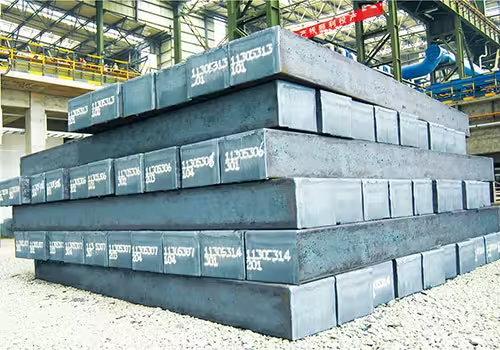
The most effective breakthrough in minimizing oxidation loss lies in the meticulous control of the primary oxidizing gases: oxygen (O2) and carbon dioxide (CO2).
The Critical Role of Oxygen in Steel Billet Oxidation
Even minute concentrations of O2 at high heating temperatures will cause oxidation. Research confirms that oxygen plays a decisive role in the oxidation of the steel billet. At high temperatures, oxygen reacts with iron, forming the stable oxides FeO, Fe3O4, and Fe2O3. Since this reaction is irreversible, the only way to significantly reduce scaling is to minimize the oxygen content in the furnace gas.
Studies on low-carbon steel in oxygen-nitrogen mixed gases, where oxygen concentrations ranged from 1% to 15% and temperatures were between 1000∘C and 1250∘C, showed that the oxidation rate is directly determined by the oxygen concentration. Higher oxygen concentration leads to a higher linear oxidation rate constant. Furthermore, the linear rate constant’s sensitivity to oxygen concentration is greater than its sensitivity to the oxidation temperature. This emphasizes that targeted atmospheric control is often more impactful than just lowering the heat.
How Low Should Oxygen Levels Be? Quantitative Targets
Quantitative studies underscore the dramatic benefits of minimizing O2. Research simulating the high-temperature oxidation of 08Al plate steel demonstrated that oxidation burn loss decreased markedly as the volume fraction was reduced. Specifically, when the O2 volume fraction was less than 0.1%, the oxidation burn loss was reduced by over 70% compared to a volume fraction of 4%. This is a profound finding, showing that minute adjustments to atmosphere composition yield greater results than solely relying on temperature reduction. For comparison, reducing the heating temperature from 1250∘C to 1200∘C while keeping oxygen at 4% only reduced the oxidation loss by about 12%.
Mitigating Carbon Dioxide’s Oxidizing Impact
While oxygen is the primary culprit, carbon dioxide (CO2) must also be strictly managed as it acts as an oxidant at high temperatures, producing FeO, Fe3O4, and carbon monoxide (CO). Although the reaction is theoretically reversible (if CO concentration is high), actual production conditions rarely provide sufficient CO to suppress oxidation.
Research on low-silicon and low-carbon steels in mixed H2O-N2-CO2 atmospheres showed that the total oxidation rate is proportional to the partial pressure ratio of CO2 in the mixed atmosphere. Essentially, the quantity of oxidizing gas dictates the oxidation rate. For U71Mn steel in a pure CO2 atmosphere, oxidation intensified progressively with higher heating temperatures, with the scale thickness significantly increasing once temperatures exceeded 1000∘C. Therefore, effective Steel Billet maintenance requires controlling both O2 and CO2 concentrations, especially when operating above the critical 1000∘C threshold.
Secret 2: Controlling Sulfur Dioxide and Water Vapor for Superior Steel Billet Maintenance
Beyond the main oxidizers, sulfur dioxide (SO2) and water vapor (H2O) act as secondary atmospheric components that severely compromise the oxidation resistance of steel billets, affecting both the kinetics of scale formation and the difficulty of removal.
The Hidden Danger of : FeS Layer Formation
Sulfur dioxide is particularly problematic because it leads to the formation of iron sulfide (FeS) within the oxide layer, typically at the interface between the steel matrix and the scale. The presence of FeS can significantly reduce the adherence of the scale to the base metal, leading to separation and, subsequently, excessive metal oxidation at high temperatures. Conversely, if the temperature drops, FeS can exhibit strong adhesion, making the subsequent descaling process more difficult and negatively impacting the final product’s surface quality.
Optimizing Concentration to Maintain Quality
To optimize Steel Billet maintenance and improve product surface quality, controlling SO2 content is crucial. Studies on low-carbon steel at 1200∘C in a mixed atmosphere containing SO2 demonstrated clear thresholds:
- When the SO2 concentration exceeded 200 mg/m3, the resistance of the steel matrix to high-temperature corrosion noticeably decreased.
- When the concentration surpassed 500 mg/m3, a relatively complete FeS layer began to form at the interface between the oxide layer and the base metal.
By effectively controlling the SO2 content in the atmosphere, manufacturers can manage the segregation of FeS at the interface, thereby minimizing high-temperature sulfidation corrosion and reducing the difficulty of later scale removal.
Addressing the High-Temperature Threat of Water Vapor
Water vapor (H2O) is a combustion product often present in the heating furnace. Although historically less studied than O2 or CO2 in the context of general steel billet heating, research confirms its detrimental effect. When water vapor is present in oxygen-containing atmospheres, the degree of steel oxidation intensifies as the moisture content increases.
For U71Mn steel, experiments conducted at various temperatures revealed that oxidation became noticeable when the temperature reached above 800∘C, and the process became increasingly severe as the temperature rose further. Given that heating furnace temperatures often exceed 1200∘C and can reach 1300∘C or more, the oxidizing effect of water vapor is significantly amplified at typical operating temperatures.
Is Water Vapor Really a Big Deal in Steel Billet maintenance?
Yes, because the higher the furnace temperature, the more potent water vapor becomes as an oxidizing agent. Existing research often focuses on lower temperatures (500∘C to 800∘C) due to experimental limitations, meaning the full impact of H2O at typical billet reheating temperatures (up to 1300∘C) is likely even more severe than widely understood. Studying the effects of water vapor in this high-temperature range is crucial for controlling oxidation loss during Steel Billet maintenance.
Summary of Atmospheric Components and Their Impact on Steel Billet Oxidation
To successfully implement advanced Steel Billet maintenance, a holistic view of the furnace atmosphere is required. The following table summarizes the main atmospheric threats and their critical control points, drawing on research focused on oxidation behavior:
| Atmospheric Component | Oxidation Mechanism/Product | Critical Temperature Range | Impact on Steel Billet Quality | Control Strategy for Steel Billet maintenance |
| Oxygen | Forms FeO, Fe3O4, Fe2O3. Irreversible reaction. | Primarily above 1000∘C. | Direct mass loss; high oxidation rate. | Reduce volume fraction below to achieve >70% reduction in scaling. |
| Carbon Dioxide | Acts as an oxidant, forming oxides and CO. | Accelerates oxidation significantly above 1000∘C. | Increased oxidation rate, dependent on partial pressure. | Monitor and minimize partial pressure in the oxidizing atmosphere. |
| Sulfur Dioxide | Forms FeS layer at scale/metal interface. | At 800∘C and higher. | Decreased scale adhesion (high temp) or increased adhesion (low temp), affecting descaling and quality. | Maintain concentration below 200 mg/m3 to prevent loss of corrosion resistance. |
| Water Vapor | Intensifies oxidation when mixed with O2. | Noticeable above 800∘C; significantly amplified above 1200∘C. | Increased oxidation severity, especially in furnace conditions. | Reduce moisture content in the furnace environment. |
Secret 3: Integrating Process Parameters for Advanced Steel Billet Maintenance
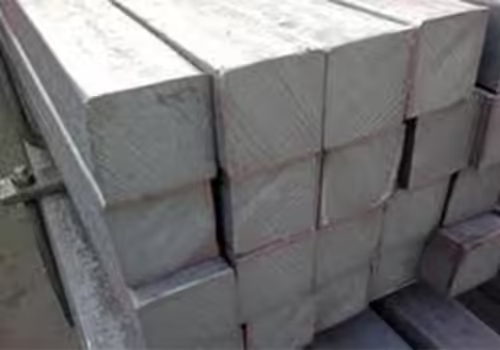
While atmospheric control is vital, the third breakthrough in effective Steel Billet maintenance involves moving beyond isolated variables and establishing a quantitative relationship between oxidation loss and the complete production environment.
The Interplay of Temperature and Atmosphere
The heating schedule—specifically the temperature curve—is intrinsically linked to atmospheric effects. Although reducing oxygen concentration is generally more effective than reducing temperature, the severity of oxidation caused by all components (O2, CO2, H2O) increases dramatically once temperatures exceed 1000∘C.
The process often follows specific oxidation kinetics:
- Initial Linear Stage: Oxidation proceeds rapidly, following a linear rate.
- Later Parabolic Stage: As the oxide layer thickens (e.g., beyond 0.4 mm for low-carbon steel), the rate tends to slow, following a parabolic law.
Understanding these kinetics, influenced by gas speed and concentration, is part of robust Steel Billet maintenance. For instance, the oxidation rate is governed by the critical oxygen supply rate; if the gas speed is below this critical rate, oxidation slows down.
Why Alloy Composition Matters in Oxidation Resistance
The specific chemical composition of the steel billet also significantly affects its maintenance profile. Different steel types, such as the high-quality steel produced by certain manufacturers, will exhibit varying oxidation behaviors. Studies comparing high-strength steel, bake-hardening steel, and low-carbon steel showed that they had similar oxidation kinetics and rates when processed under the same atmosphere, primarily because their alloy compositions were not significantly different. However, introducing alloying elements like manganese can alter the scale morphology, requiring higher levels of the element to effectively lower the corrosion rate under oxidizing and sulfurizing conditions. Therefore, any quantitative model for Steel Billet maintenance must integrate the specific steel grade composition along with the heating process and atmosphere.
The Need for Quantitative Modeling and Simulation
Current research often focuses on qualitative experiments using controllable atmosphere furnaces, primarily investigating oxidation dynamics and reaction mechanisms. While informative, these studies often lack the precision to accurately reflect complex, fluctuating, industrial heating furnace conditions.
The critical next step in achieving the best Steel Billet maintenance is the shift towards precise quantitative simulation. This involves:
1.Accurately Simulating Furnace Conditions
Factoring in the fluctuating content of various oxidizing gases (CO2, H2O, O2, N2).
2. Establishing Quantitative Relationships
Creating models that definitively link the oxidation burn loss of typical steel grades to the specific components of the furnace atmosphere.
3. Holistic Parameter Integration
Combining data related to steel composition, heating schedules, and atmosphere fluctuations to guide real-time production adjustments.
Research based on setting specific air coefficients and calculating combustion products—often involving complex mixed gases like CO2-H2O-O2-N2—is necessary to derive rational air coefficient adjustment ranges and combustion strategies. The goal is to move from theoretical mechanisms to practical, data-driven advice for factory floor operations.
What is the biggest research gap in steel billet maintenance?
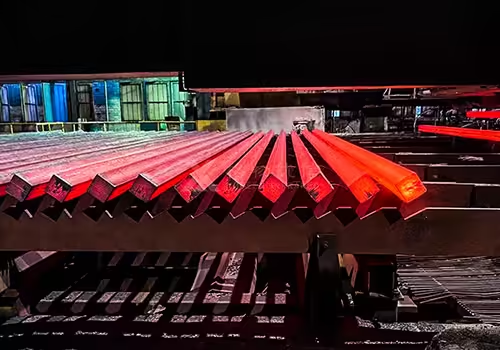
One of the largest gaps remains the lack of quantitative data regarding single atmospheric components like CO2 and SO2 and their direct relationship to steel billet oxidation loss, as much of the existing data is derived from complex mixed atmospheres. Furthermore, high-temperature H2O effects (above 1200∘C) are underrepresented in current literature. Filling these gaps is key to optimizing Steel Billet maintenance technology.
Conclusion
Oxidation loss during the high-temperature heating of steel billets is an unavoidable challenge in steel manufacturing. However, the three secrets detailed—controlling O2/CO2 concentration, managing the influence of SO2/H2O, and integrating precise quantitative process modeling—represent the crucial breakthroughs required to minimize scaling and maximize metal yield.
To significantly reduce oxidation burn loss, the focus must shift towards practical implementation guided by rigorous research. This means industrial operators must use the understanding that minimizing the O2 volume fraction is more powerful than simple temperature reduction, and that controlling trace elements like SO2 is essential for maintainable scale layers. Future efforts in Steel Billet maintenance should prioritize creating quantitative models that accurately simulate the actual complex conditions of the heating furnace, integrating all factors—steel grade composition, heating regime, and atmospheric component variability—to provide clear guidance for process adjustments in the field.
By pursuing these advanced methods, the industry can work towards consistently achieving the international standard of approximately 0.5% oxidation loss. Companies that offer comprehensive support, including technical and inspection services, are best positioned to leverage this research for improved product quality.
FAQ
How does temperature affect steel billet maintenance and oxidation?
Temperature is a primary driver of oxidation, with the reaction rate increasing significantly, particularly once the temperature of the steel billet reaches 1000∘C. For heavy rail steel, the rate of oxidation escalates dramatically above this temperature. High temperatures also amplify the oxidizing effects of water vapor, making temperature control an important aspect of Steel Billet maintenance, though controlling oxygen levels may offer greater overall impact on loss reduction.
What kind of oxidation kinetics apply to steel billet processing?
The oxidation thickness often follows a linear rule initially, especially when the oxide layer is thin. This is where the oxidation rate is constant over time. Once the oxide layer thickens past a certain point (e.g., 0.4 mm), the oxidation behavior often transitions to follow a parabolic law. Different atmospheric components, like water vapor, may lead to dual linear or linear-to-parabolic transitions depending on the temperature. Understanding these kinetics is vital for predicting scale thickness in Steel Billet maintenance.
Do manufacturers offer technical assistance for optimizing steel billet maintenance?
Yes, leading steel companies often provide various support services to ensure quality control. For example, Henan Jiyuan Iron & Steel (Group) Co,.Ltd, which produces various high-quality steel products including the steel billet, lists services such as Tech Support, Order Production, Processing Service, and Inspection Services. These services help clients address issues like high oxidation rates and implement optimal heating schedules.
Why is continuous research needed in steel billet maintenance?
Continuous research is required because many existing studies are limited to controlled, qualitative atmospheres and lower temperatures. To provide actionable advice for operations where temperatures exceed 1200∘C and atmospheres are mixed and fluctuating, researchers must conduct precise, quantitative simulation experiments that integrate the complex interactions of steel type, heating schedule, and all oxidizing gases. This will establish the robust quantitative relationships necessary to fully optimize modern Steel Billet maintenance.

